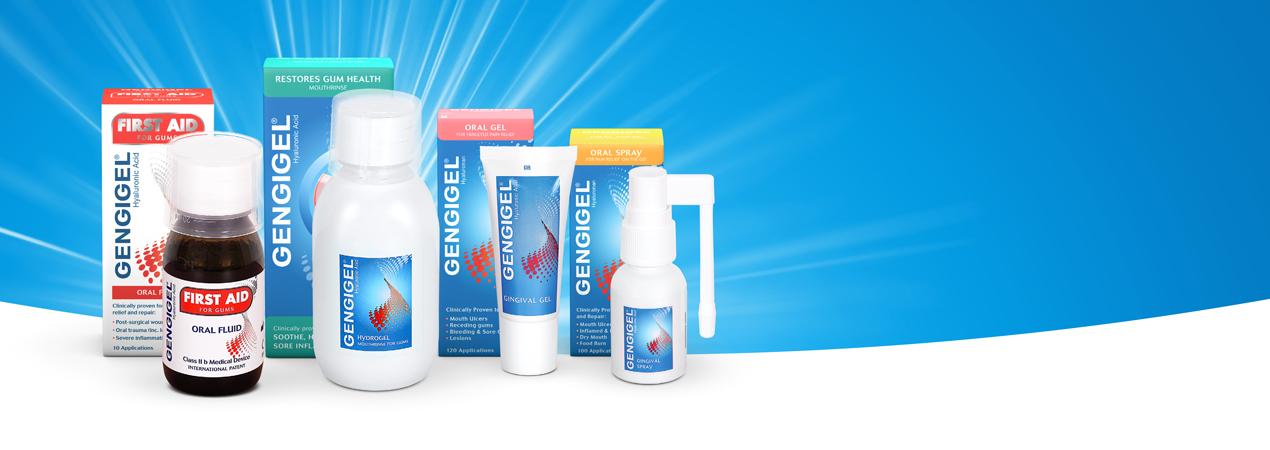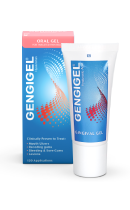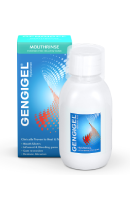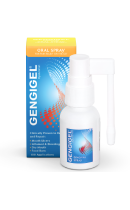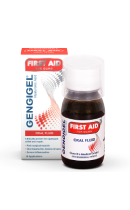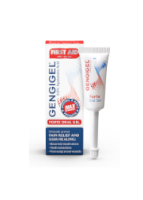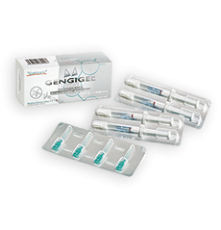Introduction
The following section will present a series of case studies in which hyaluronic acid is used in a gel form at a concentration of 0.2% both to complete surgery and in post-operative care. Hyaluronic acid (HA) is a linear, hydrophilic, polyanionic polysaccharide with high molecular weight. It is a natural component of synovial joint fluid and is available in extracellular matrices such as mineralised or unmineralised periodontal tissue. A HA molecule has a great hydrodynamic volume and HA solutions are highly viscous and elastic.
Hyaluronic acid provides important functions:
- It bonds with collagen or proteoglycans to give elasticity, resistance and lubrication to the extracellular matrix.
- It facilitates anchorage of the cells to the extracellular matrix that surrounds them.
- It is part of the normal healing process, especially the initial stages, since it is an essential component in the reepithelialisation of the epidermis.
- It provides an anti-inflammatory effect by preventing the destruction of tissue and facilitating the healing process.
- It acts as a bacteriostatic by forming a film that prevents the penetration of viruses or bacteria.
- It helps prevent the formation of build-up if applied at the end of surgery, thanks to its high molecular weight.
That is why hyaluronic acid is recommended for oral surgery; it significantly improves clinical results by facilitating the healing of wounds and tissue repair and regeneration in the gums and mucosa, as well as reducing inflammation, the risk of infection and painful, post-surgery symptoms. There are many products available but it is important to verify the origin of the HA and check whether the concentration is high enough to be effective in terms of adhesion, healing and anti-inflammatory effect.
When choosing a hyaluronic acid product by concentration, the criteria to take into account are size and type of wound, mainly depth and extension, and how easy it is to access the wound. The further the wound is from the central area, the more it will require treatment with more fluid galenic treatments (to the detriment of the HA concentration). However, where the wound is accessible, it is recommended to use the highest concentration of hyaluronic acid which usually has a thicker gel formula.
Hyaluronic acid has a high molecular weight and a 0.2% concentration has shown excellent results in terms of adhesion, which not only improves healing after surgery by reducing healing time and minimizing complications, but also provides a sensation of relief with each use. The more extensive the surgery, the more notable this effect. HA forms an adherent protective film around the mucosa, with maximum adhesion to the tissue which allows the HA to remain in the mouth for longer, extending its bacteriostatic, anti-inflammatory and repairing effects.
It is important to verify the origin of the hyaluronic acid used, since HA obtained through biotechnological synthesis, as opposed to bacterial or animal origin, guarantees a high level of purity and similarity to endogenous hyaluronic acid, which boosts its anti-inflammatory, protective and repairing effects on the oral mucosa. Hyaluronic acid of biotechnological origin minimizes risks by preventing the development of resistance or interactions with other drugs, making it suitable for all patients. In terms of safety, this characteristic makes it biocompatible with no cytotoxicity, contraindications or adverse effects. It can be used in complete safety with other medication and by diabetic patients.
Another advantage over topical steroids is that it can be used on all patients, including children, pregnant women and elderly people. The HA has no local or systemic pharmacological effect on the mucosa. Human studies have demonstrated that the similar characteristics between exogenous hyaluronic acid and natural HA help facilitate the natural healing process, the repair of tissues and water balance.
In conclusion, biotechnological hyaluronic acid of high molecular weight at a concentration of 0.2% is to be considered an innovative product that is essential as post-surgery medication to be recommended in case of oral surgery.
Author: Ana Echeverría Manau
MSc in Periodontology and Implants from UCM &
Board of the European Federation of Periodontology.
Professor of Periodontology on the Integrated Adult Dentistry MSc at UB

